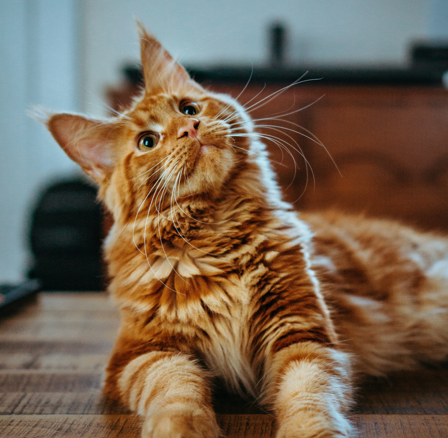|
Keeping your cat well-groomed and hygienic is crucial for their health and comfort. While cats are excellent self-groomers, there are many ways you can step in to support them, especially when it comes to certain areas they can’t manage on their own. Here are the top ten grooming and hygiene tips to keep your feline friend in top shape. |
1. Brush Regularly
Brushing your cat’s fur is essential for removing loose hair, dirt, and dander. It also helps distribute natural oils across their coat, keeping it shiny and healthy. Long-haired breeds may require daily brushing to prevent tangles and mats, while short-haired cats can benefit from weekly sessions. Use a slicker brush or a comb designed for your cat’s fur type, and remember to be gentle, especially around sensitive areas like the belly and legs.
2. Check for Matted Fur
Matted fur is not only uncomfortable for your cat but can also lead to skin infections if left untreated. Common areas for mats include behind the ears, under the legs, and around the tail. Use a detangling spray and a mat-removing comb to gently break apart mats. Regular brushing can help prevent mats from forming, and for severe cases, consider seeking professional grooming assistance.
3. Clean Their Ears
Cats’ ears are prone to wax buildup, which can lead to infections if not cleaned properly. Use a cotton ball soaked in a vet-recommended ear cleaner to wipe the outer ear, avoiding the ear canal to prevent damage. Look for signs of ear mites or infections, such as redness, odor, or excessive scratching. Routine ear checks can prevent minor issues from escalating.
4. Trim Nails Monthly
Overgrown nails can cause pain, difficulty walking, and even infections if they grow into the paw pads. Trim your cat’s nails every 3-4 weeks using cat-specific nail clippers. Clip just the tip of the nail, avoiding the pink quick, which contains blood vessels and nerves. If you’re nervous about trimming, ask your vet or a groomer to show you the proper technique.
5. Manage Tear Stains
Breeds like Persians and Himalayans are prone to tear stains due to their facial structure. Use a warm, damp cloth or a vet-approved tear stain remover to gently clean the area around their eyes. Regular cleaning prevents stains from setting and helps reduce the risk of eye irritation or infections.
6. Address Dental Hygiene
Dental care is often overlooked but is vital for preventing gum disease, bad breath, and tooth decay. Use a cat-safe toothbrush and toothpaste to brush their teeth regularly. If your cat resists brushing, dental treats, water additives, and vet-approved oral rinses can help maintain their oral health. Regular dental check-ups with your vet are also recommended.
7. Bathe Only When Necessary
While cats generally keep themselves clean, occasional baths may be necessary for health reasons, such as skin conditions or exposure to something harmful. Use a cat-specific shampoo and lukewarm water, and ensure the bathing area is safe and non-slippery. Towel-dry your cat thoroughly and keep them warm until they’re completely dry. Avoid frequent baths, as they can strip natural oils from their coat.
8. Check for Parasites
Regularly inspect your cat for fleas, ticks, and other parasites, especially if they go outdoors. A flea comb can help you spot and remove fleas, while your vet can recommend effective treatments like topical medications or oral preventatives. Left untreated, parasites can lead to discomfort and serious health issues.
9. Keep an Eye on Anal Glands
Cats have anal glands that can sometimes become impacted, causing discomfort and irritation. If your cat is scooting on the floor or licking their rear excessively, it could indicate an issue. Your vet can safely express the glands and check for infections if necessary.
10. Hydration for Skin and Coat Health
Proper hydration is key to maintaining your cat’s skin and coat health. A well-hydrated cat is less likely to experience dry skin or dandruff. Encourage hydration by providing fresh water daily, using a water fountain, or incorporating wet food into their diet. Hydration also supports overall health, contributing to a shinier, healthier coat.
Conclusion
Grooming and hygiene are essential for keeping your cat healthy and happy. Regular maintenance, combined with a keen eye for changes in their skin, coat, or behavior, will ensure your feline friend stays in their best condition.
Sources
PetMD: Essential Cat Grooming Tips
ASPCA: Cat Grooming Advice
The Spruce Pets: Cat Grooming Tips
Modern Cat Magazine: Cat Grooming Essentials




